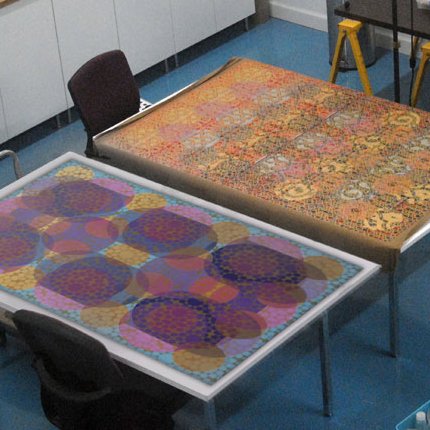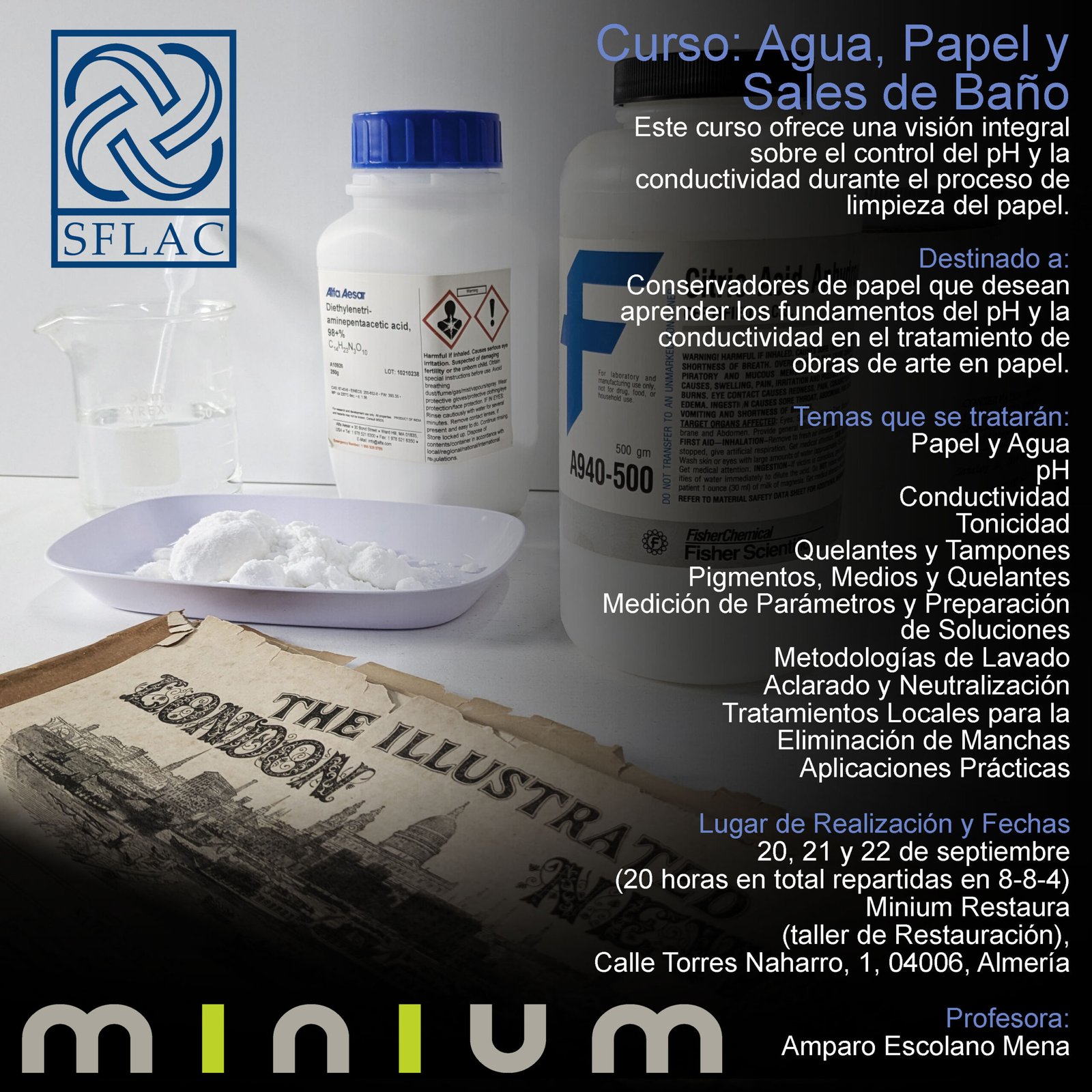Between blotter washing, washing with the capillary unit, or paraprint washing, the three methods frequently used for aqueous treatment of water-sensitive paper objects, paraprint washing is our preferred technique because the simplicity of the set up and of the easy application.
Paraprint OL 60 is a viscose non-woven fabric, originally designed for coolant filtration and for medical uses in wound treatment. The main characteristics that make it suitable for its use in paper washing are its strong capillary action and high diffusion rate.

With water-sensitive paper objects, the challenge is to remove water-soluble degradation products, while keeping the water-sensitive medium in its place. Paraprint washing is a treatment similar to blotter washing, but in this case Paraprint OL 60 is used instead of the blotting paper. In Paraprint washing, once the object has reached an equilibrium with the water content of the paraprint, discolouration products are removed from the object that lies in contact with the fabric, first by the diffusion of these substances towards the clean water contained in the fabric trying to reach an equilibrium again, and then by the continuous water renovation and water flow created due to the capillary or siphoning action of the fibers in the non woven fabric.


As shown in the pictures above, our setup was very similar to the one used for washing with the commercially available capillary unit, but substituting it by a couple of regular washing trays and a piece of plexiglass set up in a slant. The paraprint fabric was placed over the Plexiglas and wetted thoroughly. The upper edge of the paraprint is placed in the tray that acts as a clean water reservoir. The lower edge is hanging over a second tray placed underneath it to collect the dirty water. The assembly is covered to diminish the evaporation of the water along the surface of the paper (this cover was removed for the pictures), as much as possible. The paper to be washed lies on top of the Paraprint until the dripping water comes out of it completely clear. Needless to say, the process should be monitored at every moment in case inks or colors start to bleed or move through the paper.

As has been mentioned in other articles pertaining to the subject, no discoloration moving out of an object does not necessarily mean that all removable acids have been eliminated. This fact places this kind of washing at a disadvantage if compared to immersion washing. Nevertheless, if an object cannot be in any way immersed because of the associated risk, it does not matter that immersion washing is more effective than paraprint washing.
What is important is that with Paraprint washing, a substantial amount of the acids contained in the paper are eliminated and for those remaining, a deacidification agent that neutralizes the residual acidic content of the paper can be applied.
Finally, it is worth mentioning that even if it is only a cosmetic improvement, the washed watercolor appears with more brightness after the treatment.
Bibliography:
http://iada-home.org/JPC1101.pdf.
http://archiv.ub.uni-marburg.de/es/2007/0004/pdf/Huhsmann-Haehner-140-151.pdf
Para español haz click aquí






